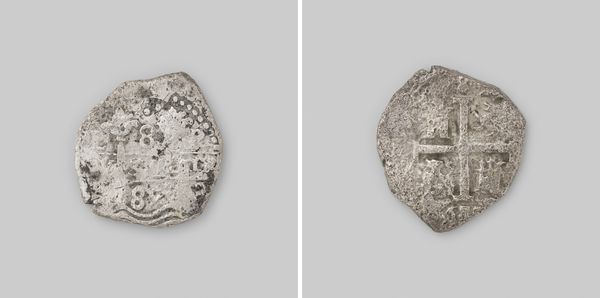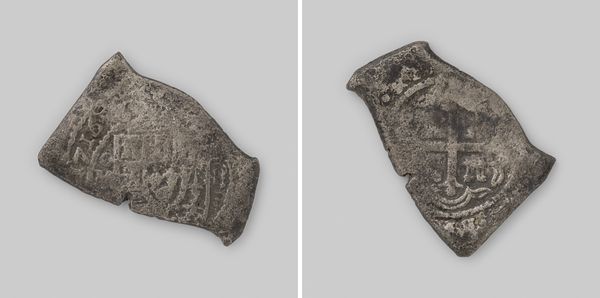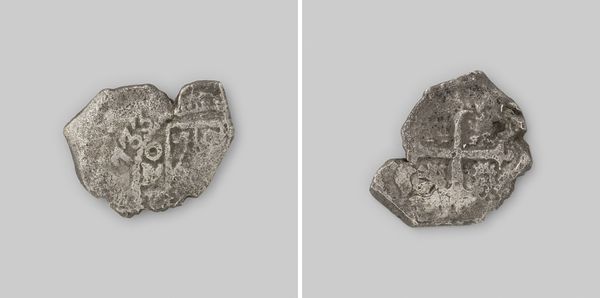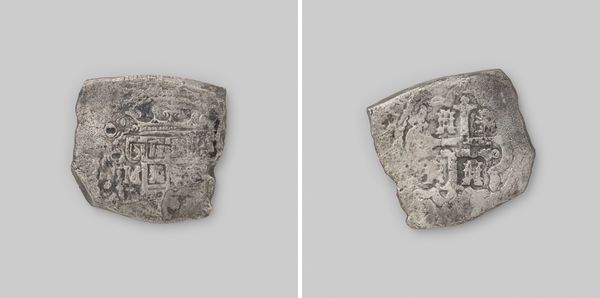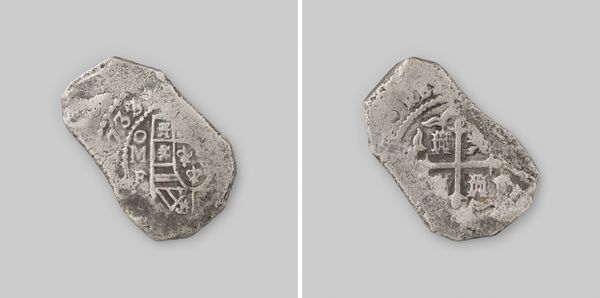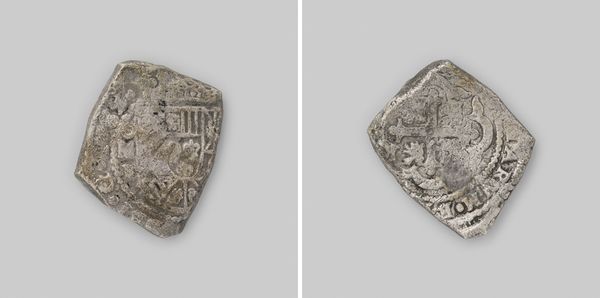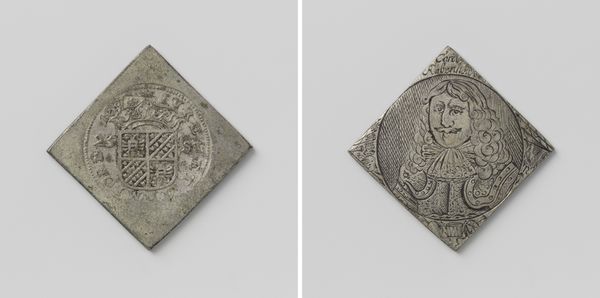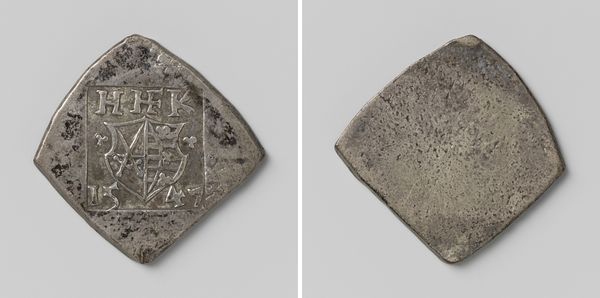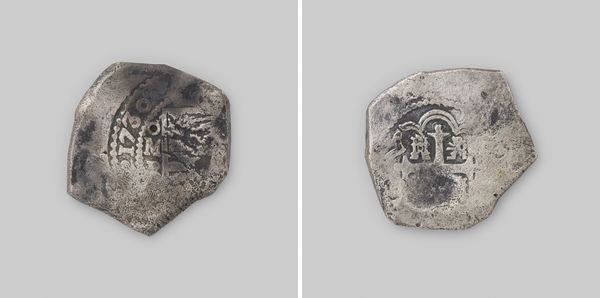
Reaal van achten, geslagen te Potosi, munt uit het wrak van de Oost-Indiëvaarder 't Vliegend Hart 1701
0:00
0:00
metal, engraving
#
metal
#
geometric
#
islamic-art
#
history-painting
#
engraving
Dimensions: height 3.6 cm, width 3.3 cm, weight 22.85 gr
Copyright: Rijks Museum: Open Domain
Editor: Here we have a “Reaal van achten,” or piece of eight, minted in Potosi in 1701. It’s a silver coin, recovered from the wreck of the Dutch East India ship, 't Vliegend Hart. It’s amazing to think of it traveling so far! I’m struck by how worn and almost ghostly it looks. What stories do you imagine are embedded within this little artifact? Curator: Ghostly is right! It whispers of fortunes sought and lost, doesn't it? I see echoes of a global trade network, fueled by both ambition and exploitation. Look closely at those worn symbols; they once represented Spanish power, pressed into silver mined in the Americas. Now, after centuries under the sea, they are softened, almost impressionistic. Does that give you a sense of poetry at all? Editor: Absolutely! There’s a powerful contrast between the coin's original purpose—projecting wealth and control—and its current state. Like a ruin, it implies so much lost significance, or transferred significance at least. Curator: Transferred indeed! To us now, it's less about Spanish dominion and more about human endeavors on the grandest scale. But don’t you think its beauty lies in that inherent ambiguity? Its very damage makes it speak louder, like an incomplete sentence hinting at an epic saga. The water gave this thing such amazing patina! Editor: I never thought about a coin having patina, but it certainly does, and like an old painting, the patina contributes to a certain feeling, it adds value. Thanks! Curator: My pleasure. I’ll never look at change the same way again, I think.
Comments
No comments
Be the first to comment and join the conversation on the ultimate creative platform.
